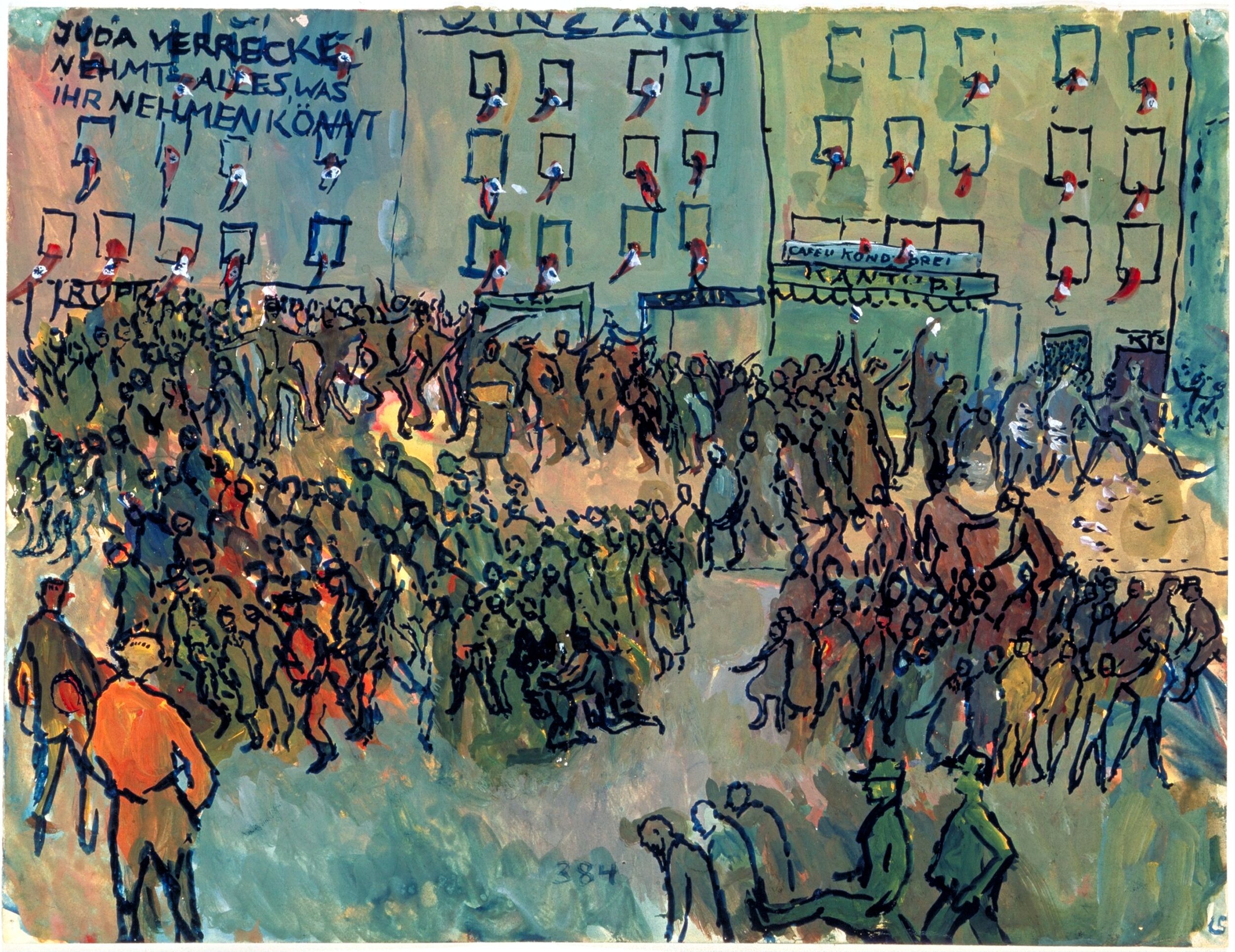
Sample Module - Jewish Resistance
The Third Reich identified a number of people, or groups of people, as enemies. Nikolaus Wachsmann wrote in an essay called "The Politics of Exclusion" that there were three main enemies who were subject to the policy of exclusion from the state: political opposition; social outcasts; racial aliens. With the infiltration of the SS into the state's police and legal framework, the Nazis were able to neutralize political opposition rather quickly, so that by the mid-1930s there was no longer a political threat to the Nazi party. The 1930s also saw the Nazis move against social outcasts - especially physically or mentally handicapped people, but also gays and lesbians, among others - in a variety of ways. For example, with the handicapped, sterilization took place on a massive scale. Coordinated moves against racial aliens came more gradually, first with the Nuremberg laws that stripped Jews of any kind of rights within Germany, then after the war had started, the implementation of plans to resettle and then murder the Jews of conquered Europe.
We have seen that the Nazis exercised very thorough ideological influence and even control of arts and culture. With regard to society more generally, they worked assiduously to remove from the body politic those elements they thought impure. Since it was an effective totalitarian state, the Nazis were very successful in removing opposition. Most of the opposition to the Third Reich was therefore external to Germany: the writers, artists, and intellectuals who left Germany in the 1930s and formed refugee communities in France, Great Britain, America, the Soviet Union, and elsewhere, as we saw in the module on German resistance and exile.
In this module, we are focusing on the response of the Jews to the suffering visited upon them. The resistance we'll be looking at isn't armed resistance (though there was some of that), but rather the resistance, through the arts and writing, to Nazi actions against the Jews. There were of course other victims during the Third Reich, but from day one of the Nazi party, Jews were singled out for special treatment, and the attempt to exterminate all living European Jews was without parallel in the history of racially-motivated crimes.
Yes, the Holocaust is real
In order to make sure that there are no doubts that the mass murder of Jews was government and party policy, read excerpts from a speech given by Heinrich Himmler, head of the SS and a member of Hitler's inner circle, to leading SS officers and other officials in in 1943:
http://www.historyplace.com/worldwar2/holocaust/h-posen.htm
Your discussion task: Himmler's statements are blunt and explicit. Do they strike you as different from some of the propaganda you saw earlier in the course?
Paul Celan
Paul Celan was a German-speaking Romanian Jew who spent a couple of years in a Nazi forced labour camp (not an extermination camp such as Auschwitz). After the war he wrote what is probably the most famous poem of the Holocaust, "Todesfuge" ("Death Fugue"). A fugue is a short portion of music that will be repeated at different points in a musical composition.
There are three items here for you. The first one gives you John Felstiner’s translation of the poem (with some links that explain a couple of parts of the poem). The second one is an audio recording by Prof. Skidmore of that translation (poetry should not only be read, but also be heard). The last site gives you an opportunity to hear Paul Celan reading the poem himself in 1958. It’s in German, but listen anyways - the sounds of a poem in its original language are also part of the poet's message.
"Death Fugue" by Paul Celan (Felstiner translation)
Your discussion task: Is Celan's poem beautiful or terrifying? Or, if neither of those adjectives work for you, how would you describe it?
Victor Klemperer
In the mid-1990s the diaries of Victor Klemperer, a Jew living in Dresden during the Third Reich, were published to great acclaim in Germany. Klemperer was an assimilated Jew (he had been baptized a Christian) married to a non-Jewish German woman; as a result, he was further down on the list of Jews to be rounded up by the Nazis and taken to extermination camps. He was therefore able to stay in Dresden and record in fascinating detail the gradual yet unmistakable shrinking of the place of Jews in German society. There very existence demonstrate that resistance can take many forms.
When the diaries appeared in English, The New Yorker printed these excerpts spanning the years 1933-1945:
Victor Klemperer's diaries (students enrolled in the course have access to the article)
Your task: Do you think Klemperer becomes more Jewish during the Third Reich?
Charlotte Salomon
Charlotte Salomon was a Jewish artist who grew up in Berlin in a family marked by severe depression. She died in Auschwitz in 1943, five months pregnant with her first child. She has been hailed as one of the greatest Jewish artists of the Holocaust, yet as this article from The New Yorker points out, her art had little to do with Nazi oppression and more to do with her own life and immediate circumstances:
The Obsessive Art and Great Confession of Charlotte Salomon (students enrolled in the course have access to the article)
Your task: Having read about her life and seen some of her art, would you consider her an artist of the Holocaust? Yes, no, partially?
Module Review Exercise
Your task: In this module you read about some German-speaking Jews and their experiences during the Holocaust. Would you call what they did resistance?
Feel free to make use of the content items in the module and the postings of your classmates when composing your answer. (For example, perhaps someone else mentioned the point you're making in a posting - you can cite that and expand on it.)
550-650 words
